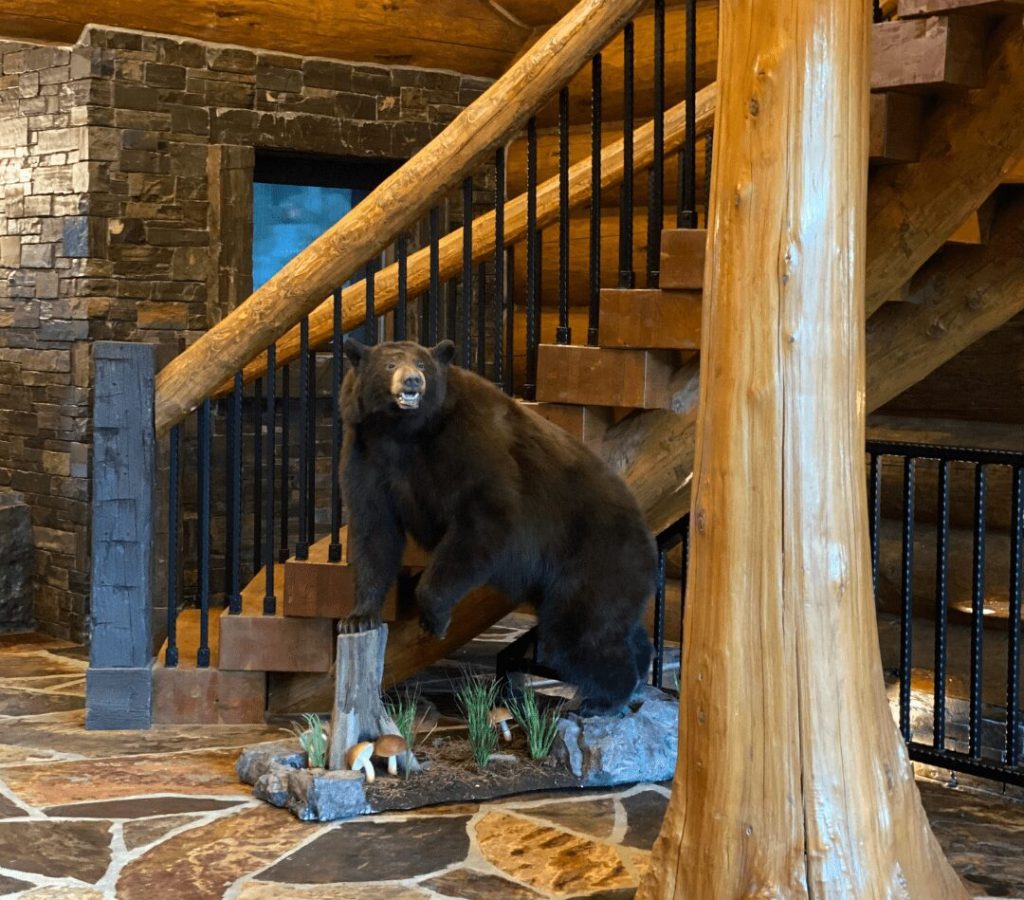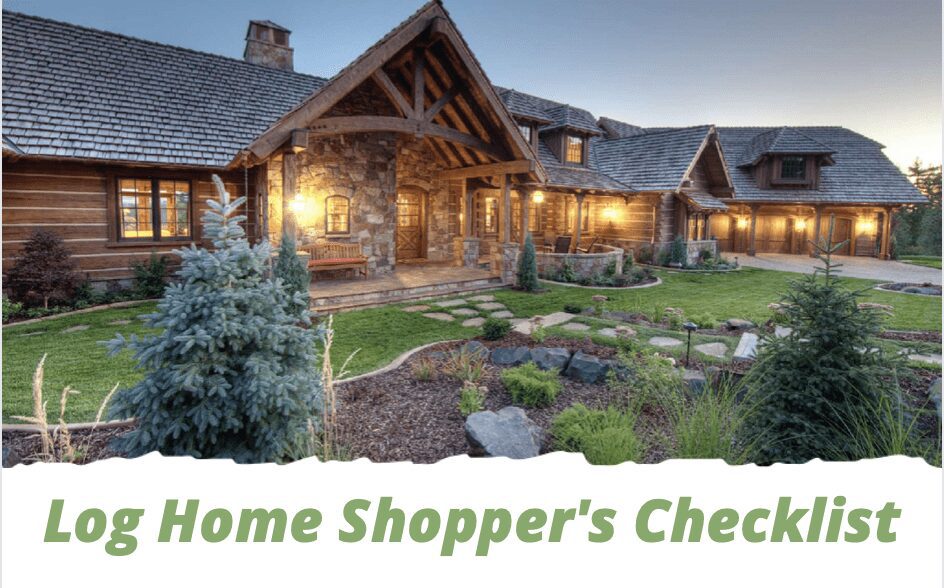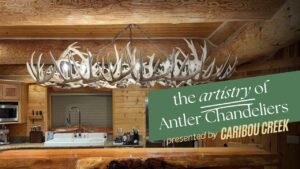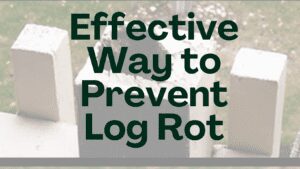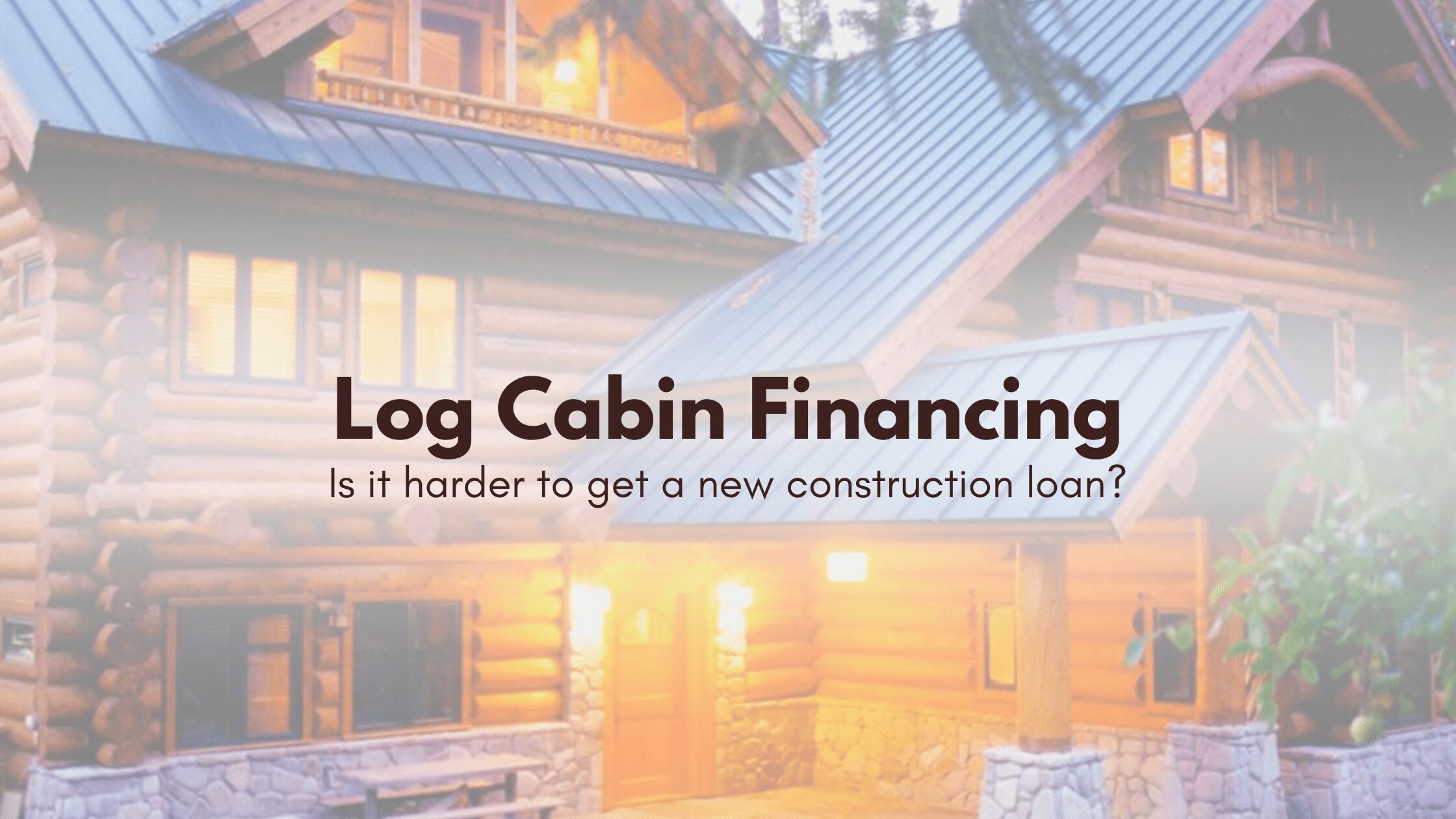
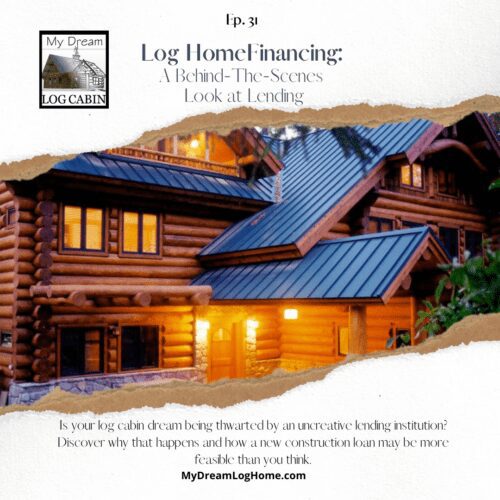
The Reality of Log Cabin Financing
Is your log cabin dream being thwarted by an uncreative lending institution? Discover why this happens and take a peek behind-the-scenes of how one bank finances log cabins and more specifically, log cabin new construction!
We can all agree that log cabins take us back to yester-year, a time when life’s pace was slower and wholesome values reigned. Living in a custom log cabin in the beautiful mountain wilderness is a dream many people have been holding onto for years.
Unfortunately, many dreams are dashed when cabin lovers approach a bank to request a new construction loan and are turned down, despite having exceptional credit and a robust investment portfolio. The reason, they are told, is not because of their financial situation, but because they are building a log home. In fact, many are even told they would qualify for a new construction loan if they were to build a more traditional-style home with some rustic accents.
This experience can be frustrating and perplexing for people who have their hearts set on a full log cabin home.
Joining us on the podcast today to shed light on this subject and help explain why some banks frown on financing a log cabin is Alex McKinley, Vice President and mortgage lender with The Federal Savings Bank. Alex is an expert on log home lending and, after our interview on the My Dream Log Cabin podcast, we were blown away to hear just how detailed the bank is with the loan process and how efficiently they get clients financed even when it takes some creativity. Be sure to catch the full episode via the links above.
After growing up in a house built by her dad, Alex understands the special memories and heart-warming experience that comes from designing and building a home from the ground up. This is why she is passionate about helping people get new construction loans, so they can experience this magic for themselves. Currently, she manages multiple projects around the country and takes great pride in keeping up to date on the progress of each home. She expressed how much she appreciates the emotional connection she has with each client often sharing tears with them as they move into their new home.
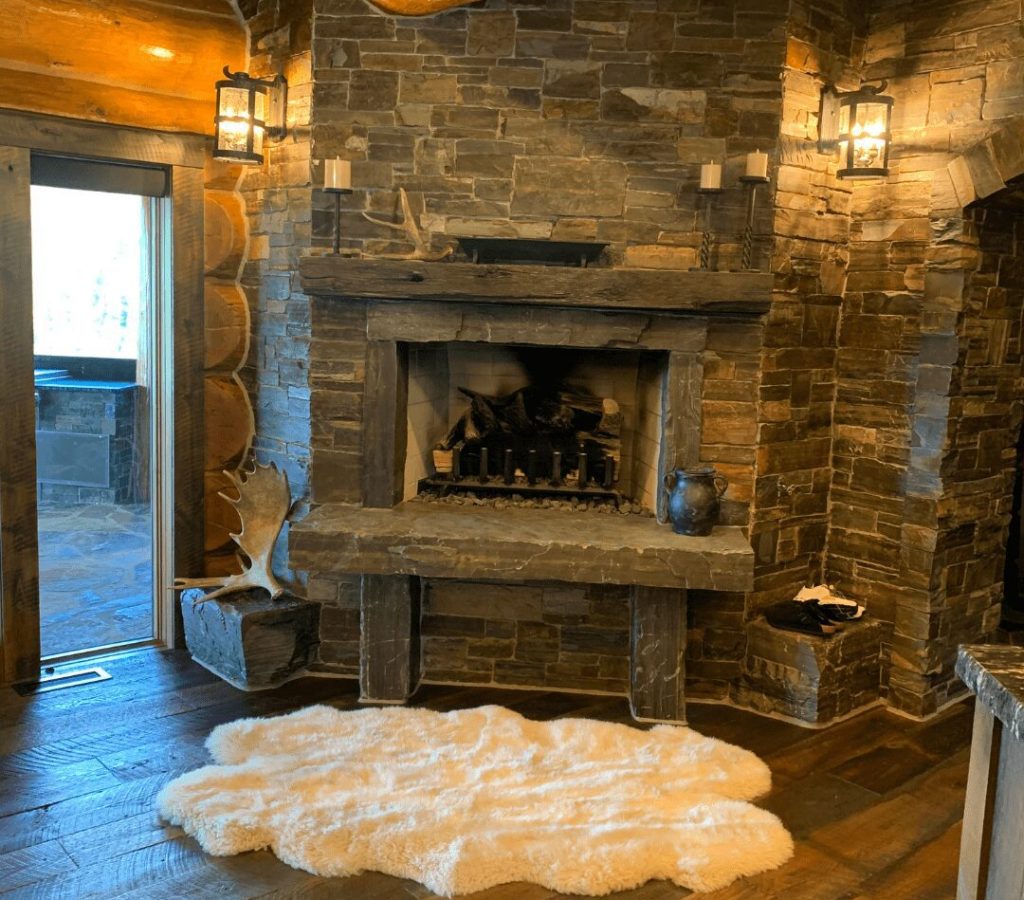
Why is it harder to get financed for a log cabin home?
Alex explains that most banks’ lending criteria are dictated by second-tier investors. The secondary mortgage market is a marketplace where investors buy and sell mortgages
packaged into bundles with many individual loans. Lenders originate loans then place them for sale on the secondary market. Investors who purchase those loans receive the right to collect the money owed.
Most of these debt investors prefer more traditional assets that protect their overall investment and are not willing to lend on unconventional investments. In the end, the reason banks don’t typically lend on log cabin construction loans doesn’t really have anything to do with the log homes themselves, just that it is a very unique market.
The Federal Savings Bank is Federally chartered but privately owned by five veterans who have taken it upon themselves to ensure lending products are available for these unique homes.
Alex’s team goes through an extensive and very detailed process to prequalify their clients which also helps establish trust and strengthens the investor-banker relationships.
What does The Federal Savings Bank look at when considering a loan?
In the episode, Alex explains in detail what her lenders are looking for when reviewing a loan application. They look at the borrower, of course, but also the floor plan to ensure the final home is marketable and comparable to the area it will be constructed in. The goal is to hopefully finish the project with equity.
“The application process is super easy,” Alex says. She and her team focus on educating their clients on what steps to expect. They also take time to hear the client’s vision for the project. Factors such as does the client own land, have they already done any improvements to the land, and other project-related details are all taken into account and may even be applied into the project.
Once the information has been reviewed and processed Alex then informs the homeowner what loan amount they are approved for.
What if you don’t have an approved plan or even land yet?
“Everyone should have a budget going into their project.”
Alex McKinley
Alex says she often has people calling to get preliminary approval for projects and she strongly urges people to reach out for a conversation sooner rather than later. She adds that often she and her team can help you plan and prepare
more efficiently so that your loan can close smoothly and pass inspections, from finding land, to soil tests, to applying for permits to finding a knowledgeable and experienced general contractor.
Before the loan is submitted each area of construction is considered including septic, water source, cabinetry, doors and windows, flooring, and more. This means, working with general contractors to get accurate bids submitted based on the plans so the entire project from groundwork to finishing touches, and everything in between, is amply accounted for —before the project even begins.
Alex works closely with the builders and the clients throughout the process to make sure everything is approved and expensed. Contractors love to work with The Federal Savings Bank because of their easy and flexible draws, and
that because they add a level of organization that helps their accounting processes. An appraiser is also sent to the project site to review the location, the specs and plans to establish a future value of what the home will be worth once it is complete. This is huge because it establishes that most clients will move into their new cabin home with equity. After working in new construction loans for about 20 years, Alex has become very familiar with all aspects of construction which has proven to be an immense benefit!
How are unforeseen expenses addressed?
“Contractors really appreciate having someone on their side to help explain the numbers and things ahead of time,” Alex adds.
Alex even factors a contingency reserves for overages that may occur due to unforeseen expenses that are pretty common on new construction projects.
In addition to unforeseen expenses, there are also parts of the project that come in under budget. When any line item comes in less than expected, that deficit offsets some of the overages as well.
Additionally, at the end of the project, the homeowner’s final loan amount only reflects the total amount spent on the project! That means, if it comes in under budget, the homeowner is not making payments on a loan for more monies than was needed. This is unlike other lending institutions that issue a lump sum total whether all the funds are allocated to the project or not.
“I like to compare it to a line of credit that is fixed,” she says.
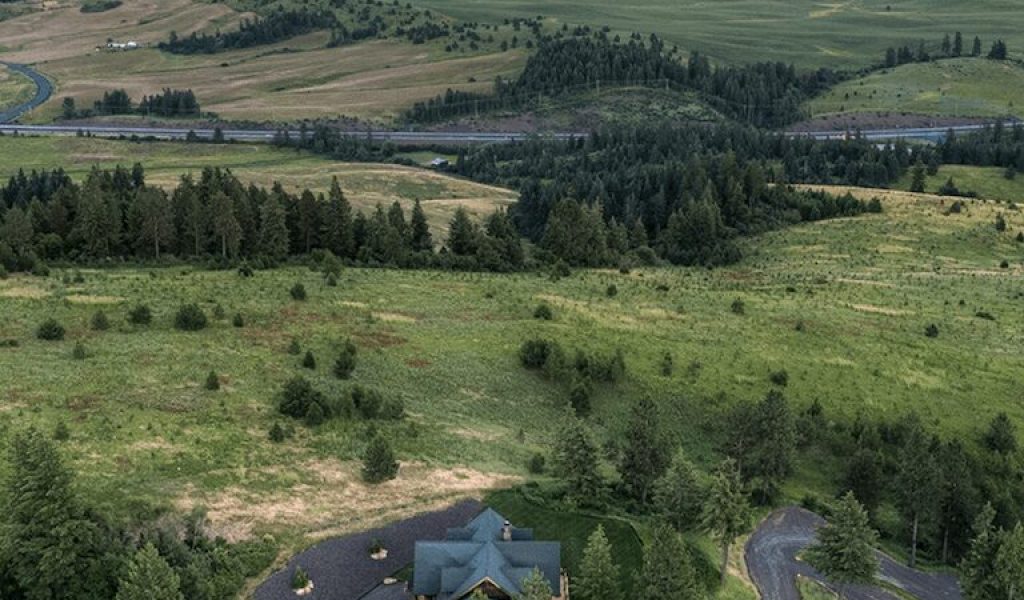
Land Loans: Does The Federal Savings Bank lend on raw land?
The Federal Savings Bank has a couple of ways to address this question.
1 – If the buyer has not purchased the land yet, it is possible they could qualify for a loan that includes the land cost, the land improvements, and construction.
2 – If the buyer has a pre-existing loan for land, the bank can pay off that loan and wrap the amount into the new loan to include construction costs.
Added Bonus! Any cash the homeowner has already put into the project, whether for land or land improvements, can be applied toward the down payment for the loan. Alex says it’s possible for home buyers to have $0 out of pocket when closing on the new loan, especially if they have already spent a few hundred thousand dollars on land and land development.
This is a great benefit to many people who would prefer to earmark the extra cash they have for other aspects of the project such as moving expenses or updating furniture.
Does the loan have to be used towards a primary residence or can it apply to vacation homes?
The Federal Savings Bank is well equipped to offer loan products on primary residences and secondary residences.
The Federal Savings Bank may even loan on vacation or investment cabins on a case-by-case situation. To find out if your unique situation is covered connect with Alex here.
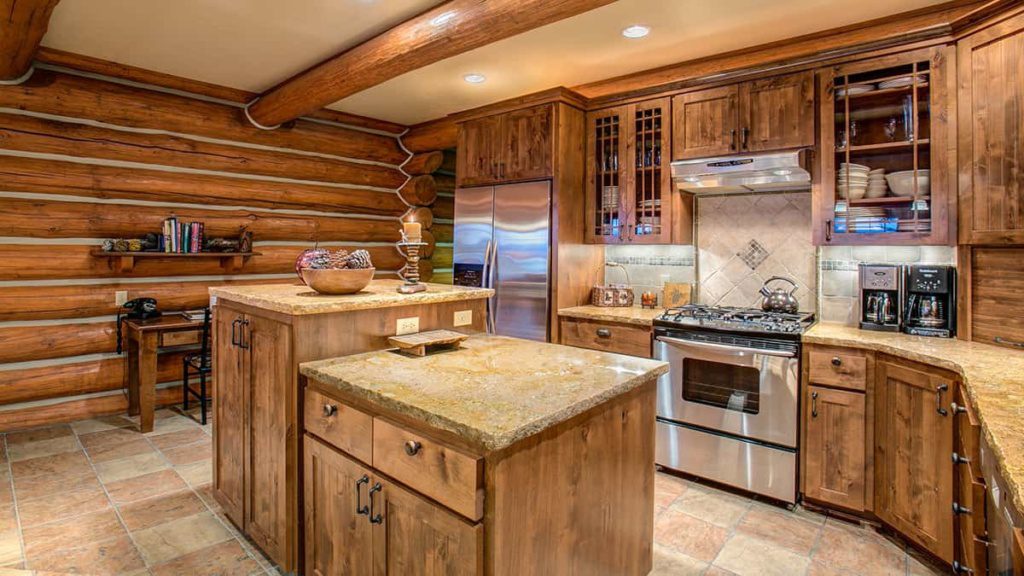
Will The Federal Savings Bank lend on a project in your area?
Currently Alex has projects in process across the United States and can most likely help you if you are US based.
Although many of Caribou Creek’s customer’s can pay cash for their dream log home construction project, it sometimes makes more financial sense to finance a portion of the project. If this situation resonates with your needs we are pleased to offer a resource that can help facilitate your project in a more finance-friendly way.
Connect with Alex McKinley and schedule a preliminary conversation at your convenience here.
Special Note:
The owners of Caribou Creek are very careful about making recommendations of any kind to our clients and potential clients. We reserve our endorsements to vendors we have had a positive personal experience working with.
During our experience working with Alex and The Federal Savings Bank Team on a project, we were so pleased with the entire process. Her team demonstrated organization and seamless communication. Payments were timely and the process for payment submissions was simple compared to some institutions we’ve worked with.
As a homeowner, this is important to know because it eliminates possible conflict with your contractor when payments are due.
Your Host
Lindsay is the host of the podcast My Dream Log Cabin. After chasing her dream of living in a log cabin in the woods, she found herself in North Idaho living in a log cabin and working with Caribou Creek Log Homes! Her posts are based on her experience and education while working with Caribou Creek.
Transcription
Alex McKinley on My Dream Log Cabin
Lindsay Sutherland: [00:00:00] Hey everybody. Welcome to the My Dream Log Cabin podcast. I’m so excited today to bring you a special guest, Alex McKinley. Alex is the Vice President, and a mortgage lender that’s her primary claim of fame at the Federal Savings Bank in Colorado. So I’m excited to have her on here because the Federal Savings Bank lends on log cabins. Okay, so obviously it’s relevant to the podcast, but Alex, thank you so much for joining us. Please introduce yourself and let everybody know a little bit about you. Where are you from? Absolutely. Thanks for having me, Lindsay. This is a really, really fun opportunity to chat with you.
Alex McKinley: I am out of Colorado like Lindsay said, but I have been in lending since 2002. I absolutely love construction financing. I think that’s my passion to really get involved with people and helping them make their dream homes. I personally grew up in a home that my dad built.
So when it’s time to go home for the [00:01:00] holidays, you have that emotional sentiment that is along with, you know, we’re going home and my dad built this, we built this from the ground up. So and then most recently my husband and I haven’t built a home, but we completely renovated, gutted. And redid a hundred year old cottage that is now our home.
So it’s really fun to walk through every room and be excited to know that we did this, we picked out all of this. This is something we created basically. So that’s why I really enjoy that part of, of my career, is helping others build their dream homes and we’ve got builds going throughout the entire United States, and it’s just fun to get all the pictures of the progress along the way.
It’s just a really fun part of my career to create stuff and especially to be part of the Caribou Creek log homes. What you [00:02:00] guys create is just absolutely incredible as far as the craftmanship that goes into it and the detail. And it’s fun to be involved with a builder who takes that extra detail into what they create.
So that’s why I’m here.
Lindsay Sutherland: I love that. I didn’t know that about you. What a cool, cool, like tidbit because I do what I appreciate that too. My dad, he didn’t build the house that I grew up in, but he did remodel and totally gut it. Like you said, with, you did with your. And every time I would, cuz he was a flooring guy, so I’d see his custom tile job and I could like just picture his hands, you know, building that cuz I was a part of it.
So I totally appreciate that and I think that is special. Coolest experiences. Anybody who’s ever built a log home or any home for that matter to go through to watch it, it’s just so exciting to see it. And then to be able to move in and, oh man. Totally.
Alex McKinley: Yeah, that is fun. It’s fun from the ground up. And I can tell you, it just, it gets really emotional when you go through the whole [00:03:00] process of planning and budgets and numbers and closing on your loan to the moment where they break ground.
Frame goes up and I mean we, I shared tears with my clients cuz it’s just, it’s that awesome.
Lindsay Sutherland: Oh, I can imagine. Well, okay, so you mentioned you, you liked what Caribou Creek is doing. How did you discover Caribou Creek? How did we all get connected?
Alex McKinley: Well, I had a client that came across you guys and they were already preapproved through the lending process.
And they had shopped around with other banks because as you know, we are one of the few lenders that does lend on log homes, especially in the jumbo market. So this client is I think just about finished with your home that you built there in the Coeur d’Alene Idaho area. And so he’s firsthand where I got to see your product and your various floor plans and the [00:04:00] detail and everything from staircases and windows and just little details.
And I go, My gosh. This is quality. Like I haven’t seen it. The size of the logs you guys use is just, it’s unique. And then it just really made me wanna learn more about Caribou Creek. So it was really fun to, you know, learn a little bit about the founders and how it’s been in the family for so many years.
And, How many of the employees there are direct relatives of the founders. So that really helps when you’re that passionate about something that you create, that your whole family is involved, makes me wanna be a part of something like that. Because I know that you take pride in, in your log homes, a lot of pride.
So that made me wanna come up and, and visit the Caribou Creek site there in Bonners Ferry. So I got to see firsthand the area where you guys are handcrafting these logs and the, the detail that you [00:05:00] put into the various faces of what you can do. It was just a learning experience. And just definitely something that I’m proud to be, be part of with you guys.
Lindsay Sutherland: Oh, cool. When were you able to come up? I haven’t been in the, in the front office there for a little bit. I’ve been having the pleasure of working from home like you see today, but , Yeah. When did you come for a visit?
Alex McKinley: I wanna say it was July. My summer has flown by, but I. I think it was July .
Lindsay Sutherland: I think it did fly by for everybody, but I, you know what, I remember when that client very first called, it was at the end of my time with caribou where I was working in the office.
And when I started working with the bank, and in all honesty, when he mentioned that he had a loan, we were all so skeptic. Because we, anytime we’ve heard of that from a customer, it’s never really worked out because most banks, as you know, they don’t lend on log homes. And so we were just kind of like, is this the real deal?
What’s going on? Is he [00:06:00] getting a personal loan? Cuz people have done that, you know, obviously with, with their means they can do that. So I was just really curious about that. And it was so exciting when we finally connected and learned more about your company and what you can do. It was, it was like a breath of fresh air.
We were, This is amazing. So I think that feeling is very mutual here because, you know, we do get asked from people, can you, you know, help us with financing And we don’t, we don’t do any financing in house. Obviously that would be a really mean we’d basically be our own bank. That would just be a little crazy
But let’s talk about that. Why is it that so many banks, so to speak, don’t lend on log homes? What is the big like to do about that?
Alex McKinley: The main reason is that investors in the secondary market are just don’t.
Really take them. They don’t purchase them. And it’s not really anything that has to do with the log cabin itself. It’s more just of a very unique market. [00:07:00] So it really makes that sales market for the secondary smaller. So there’s less people buying them. A lot of banks will do a portfolio loan, for example.
That’s what we do for our construction loan to allow to lend on these log cabins. And then we are fortunate enough to have great relationships with a lot of investors who will, and we, we happen to know which ones those are. So we maintain a really great relationship with them.
But yeah, all in all, it just has to do with the market really.
Lindsay Sutherland: Okay. So let me just unpack that a little bit for people who maybe don’t have a clue about what the secondary market means. Mm-hmm. is that saying, So most banks traditionally, they lend money and then they kind of bundle up all their loans and they sell them to investors.
And that’s how they get the funding for the loans back so then they can lend it again. Right? Is that kinda what you’re saying?
Alex McKinley: Yeah.
Lindsay Sutherland: Okay. And so essentially a lot of times secondary lenders or you know, these hidden people with money, [00:08:00] Yes. They, they have their own rules and regulations. They’re kind of dictating what these banks can or cannot do.
But because you guys have very strategic partnerships, you’re able to kind of have a little bit more leniency now. That’s pretty cool. And that’s something that obviously somebody somewhere must have decided was a good idea because it’s not something every bank is out doing.
Alex McKinley: Yes, absolutely. And, and so our bank the Federal Savings Bank is privately owned.
That really helps. We are federally chartered but we’re owned by five amazing veterans who’ve just taken upon themselves to try and make not only home ownership, affordable, but to be able to have these products available for these unique homes that are absolutely gorgeous and popular and gaining even more popularity because we have so many construction builds going on right now across the country that are log homes.
And more and more people are becoming interested. So I think that, you know, in the future more, more lenders will get [00:09:00] on and onboard and finance on these, but you know, for now we’re fortunate to be, you know, one of the few that are.
Lindsay Sutherland: Yeah, definitely. That’s pretty cool. Okay, so how does the process work? What are some of the protocol maybe, or how, how, what word do you use to describe a project? Maybe you’re looking at a project. Do you have any certain guidelines or criteria that you need to have met in order for the loan to even be consider?
Alex McKinley: Yeah, so we do a lot of due diligence on the front end and in order to make sure that it’s gonna qualify and that it’s gonna be a sellable product like we’re talking about in that secondary market where we take a look at not only the borrowers and what they’re bringing to the table as far as their application goes, but we take a really strong look at their floor plans, The area that they’re going to build in.
We look at comparables as far as homes that are in the area, just to make sure that what they’re building is something that is marketable in their, in their local area. [00:10:00] Just because we wanna make sure that From loan processing beginning to close and to when their home is complete, that they’re building something that is going to end up with, you know, equity, hopefully.
Right. And, and something that’s marketable in the future. Their application is simple. It’s, it’s super easy. It’s just like applying for any other loan. We have a very secure online link. And we try to educate our clients in you know, the things that they’re supposed to provide to us.
You know, the standard stuff, income documentation, assets. And then we like to learn upfront about their project and what they’re hoping to do. And then, you know, this is where they tell us whether they own the land already or not. If, if they own the land, do they have. Any loans on the land that we need to pay off with the construction loan, et cetera.
And then, From establishing everything that they owe on, including the [00:11:00] land and their debts and liabilities and their income. We establish their budget, what they are preapproved for, and then in an ideal scenario, then they’ll take that budget and then they’ll go and meet with their builder, and then they’ll find a home that fits their budget and and then they’ll start working on numbers and you.
Whatever custom ideas they have for their project, and then just making sure that everything stays at or under that budget so that when we get all of the paperwork in as far as the bids and all the numbers that are associated with everything from from the ground. Right. Utilities, septic, well, are we, are we plugging into city water?
All of those costs are, are things that we can lend on and cover with the construction loan. And so we wanna make sure that we’ve got accurate numbers for everything in place, even before we submit the loan to processing. So then Yeah, [00:12:00] so, So we work really close, hand in hand with the builders and the general contractors and the borrowers, and help them throughout that whole process to make sure that.
When they get to the closing table, everything makes sense. The, the numbers look great. We have an approved plan that’s gonna make sense to the appraiser because we will send an appraiser out to do spec some plans, appraisal. And what this means is that they’re, they’re basically doing just that.
They’re taking all their plans, all their specs, their numbers. They take into consideration material that’s gonna be used and finishing touches and whatnot. And then they will establish a future value of what the home will be worth when it’s complete, which is huge because they’re already starting out before we close on the construction loan with.
Into their project ideally. And usually we, we do a really good job of looking at all of our comps and our [00:13:00] numbers to make sure that we set our clients up properly to, to have that little bit of equity to look forward to when their home is complete. And especially in the past couple of years, it’s, it’s been a great time to build because housing prices just keep going up and up and up.
Lindsay Sutherland: Okay. This is incredible. Like I had no idea there was so much going on behind the scenes. No idea. So the, the amount of, I guess, handholding, so to speak, that you are doing, I don’t know if that’s your job specifically or if you have a team of people who’s doing that, but to be so familiar with construction A, because there’s so many moving pieces, it could be easily overlooked. B, to understand all of the, like how to get the bids and to get all that paperwork in like that is so much work. All preliminarily obviously to ensure that the home gets built cuz. Heaven forbid, right? That the, the project gets stuck [00:14:00] halfway and funding ran out.
This is what’s interesting. This is what’s kind of going on in my mind. Most people when they’re building a house, like a Caribou Creek house, and, and maybe they’re funding it themselves or they sold a property and they have their own cash, however they do it, focus on the logs and the layout and the foundation and they get their contractor, but they haven’t like gone through and finished the home. Like they haven’t picked out their window furnishings and their, you know, lamps and just all those little things that we’ve talked about. This on the podcast can often actually.
Push somebody over budget more than any other aspect because, oh, well I’m gonna get this upgraded refrigerator, or I’m gonna get this fancy X, Y, Z thing. Or look at these countertops, I must have them . Yep. And so all of that is done ahead of time. What a smart move. That is pretty slick. So now when you work with a general contractor, are they prepared for that? They kind of already know mm-hmm. like, This is how we operate. This is [00:15:00] what’s gonna take to do this, and you have to kind of play in our sandbox if you wanna work this out. Or have you ever had a contractor who’s like, No, that’s just not how we function? Or how, how does that, Have you ever had any like, challenges like that?
Alex McKinley: No, not really because I think that the contractors really appreciate that they have somebody on their side explaining the numbers and explaining things up ahead of time because they are expected to, they have their own contracts that they have the homeowners signed with them. That kind of sets.
Their their, their map, right? For the whole construction and any allowances, a lot of these finishing touches, they’ll just they’ll plug in a number for, you know, appliances. Here’s your allowance for appliance, let’s try and stay under that, right? Because yeah, it is common to have some overage. But a lot of the general contractors appreciate how we handle that because we’ll take their budget and then we’ll add a, a contingency on top of that because we have been doing this long [00:16:00] enough that we know that there can be some overruns on cost.
So we added a little bit of a buffer. Usually it’s an extra 5% or so is the average above what we’re already lending them for the budget. And that way if something does come in a little bit more expensive, We have a little bit of a reserve over here to grab that and, and apply it for that extra cost.
But then the other thing that happens sometimes is because we do our draws online items, let’s say the foundation came in for less than was expected and. And you ended up with 3000 extra dollars that you didn’t use, then we kind of move that down to the next line item just to have another buffer kind of down the road.
But then at the end, if there’s anything that they did ended up not using on the construction loan, they don’t pay. It’s, it’s kind of like a, I like to kind of compare it to a, a line of credit, but [00:17:00] it’s fixed so you pay on what you use and if you don’t use the whole thing, it doesn’t roll over to your permanent loan.
Mm-hmm. . So that kind of helps avoid those, those costs that can potentially go across, over. But now builders general contractors appreciate that we do it that way cuz it keeps things organized and then it’s kind of having another person. Helping their, their people understand what’s expected for the project and how things are done.
And it’s not just them you know, asking so much of them. So we all kind of work together. It really works. Yeah.
Lindsay Sutherland: Now, you mentioned earlier talking about kind of wrapping up construction loans and maybe some preliminary expenses somebody might have already gotten themselves into before they met with you.
Perhaps even a land loan. Do you guys lend on land and or, or, I guess, let me ask you this too. What if somebody is just thinking about it, they may be thinking next year of starting, they don’t have land yet, [00:18:00] would now be a good time to reach out? How does that process work for the, for the buyer?
Alex McKinley: So we have a couple of different avenues to approach that. We can purchase the land with the construction loan. We do that quite often, and that’s usually the simplest way to do that. If they already have an existing land loan, they already have the the lot, Let’s say they purchased it a year ago. Let’s give a scenario that they purchased the lot for 200,000 and they got a loan for 100 thousand. So they paid cash for the other a hundred thousand. We will actually take their current market value of that lot. So let’s, let’s say it went up in value. Now it’s worth 250,000.
So we’re gonna take the current value. We’re gonna subtract the loan that they owe on because we’re gonna pay that. And then we’re gonna give them equity into the loan for that extra 150,000 that they already have in value and equity as their down payment into the loan. So that’s kind of another unique thing [00:19:00] that is something that the Federal Savings Bank does allow is a lot of banks do not give equity for the land and for stuff that’s already been put into to the project. So the other thing that we’ll do is if they’ve already got permits that are paid for they’ve already got utilities in, well septics, stuff like that. We’ll, we’ll actually, as long as they have their paid invoices, we’ll give them credit for that. To reduce how much money they have to come in with on our, on cash to close.
Lindsay Sutherland: That’s incredible.
Alex McKinley: Mm-hmm. . So we’ll take, if you wanna look at a construction, kind of like, like a purchase mm-hmm. , and you have to have a down payment. Right. So we can part, we can, we can lend up to 95% of the total construction costs of the cost to build, we call it. So you can imagine when you are already coming in with some equity into the land that.
Really quickly helps you get to that 5% down payment that we would otherwise need. Or it can go towards your closing costs. It doesn’t happen all the time, but I have a [00:20:00] construction and closing tomorrow for, it’s an $800,000 loan amount. They are not coming in with a single payment to closing. It’s, it’s the way that the value came in with their appraisal.
Appraisal came in really strong. And they already owned the land. So we’re just, you know, preparing the loan for them when they’re ready to make draws.
Lindsay Sutherland: That’s incredible. Who, I mean, who loves to be the good guy? Alex .
Alex McKinley: It makes it fun. Yes. Anything to closing? That’s always, That’s always a win forever.
Lindsay Sutherland: I know give them that good news. It’ll make your day. And theirs .
Alex McKinley: Absolutely. Absolutely.
Lindsay Sutherland: That’s awesome. Okay. I’ve really enjoyed this conversation. It’s so insightful and I think it really helps people understand what it looks like to come into this situation. So I guess that was one of my first question, or my last question was, Like, at what point does is it beneficial for people to connect with you now if they don’t have land?
[00:21:00] Maybe to reverse engineer kind of, Cuz this is a question we actually get asked a lot at Caribou. Okay. People will say, Well, how much does a log home cost? I just, I’m just trying to see if I can even afford it before they can even like, put their head around what style and you know, they, they don’t even go there.
They just wanna know what they can afford. So do you have a system where they could kind of come in and say like, Yes, I could get preapproved, This is in my wheelhouse. I mean, do you see where I’m going with this, kind of, this preliminary report, so to speak?
Alex McKinley: Absolutely. We get a lot of people that call in trying to get all their ducks in a row.
And they’re, you know, being very proactive as far as planning, and they may not already own the land. So they’re trying to get a realistic number, number one. Important. I always, I always recommend. Let’s get you preapproved. Let’s find out exactly what you qualify for, and then that’s gonna be your guide, your budget as far.
What you can realistically [00:22:00] build in that budget. Because everybody should have a budget coming into their project. Because if they’re not gonna be in a position to be able to purchase the land cash, which a lot of people can, and that’s always great because you have that equity. But if you’re hoping to build it all into the construction loan, Then it’s really smart to do make that your first step is get, get preapproved, actually turn in your application, work with a lender who’s gonna set you up to guide you step by step into everything that you should ex pect and look towards and, and also be able to guide you with things that go on at the county level that a lot of people, it just kind of hits them last minute. Like I didn’t know it would be that long to wait for a permit. Or, you know, some things that are required from their, from their general contractor.
And so we really like to get really involved with our clients and just. Instruct and teach as much as possible to help them come back, you know, [00:23:00] six months down the road when they have everything in order. They have found some land and we’ve already got them preapproved. We’re helping them by, you know, what to look for in choosing a general contractor who knows log cabins especially is very important. What kind of foundation they’re putting in, et cetera and, and the area that they’re building in. So those are all great things to, you know, think about at the beginning stages and and so that’s kind of where we really, we really get involved and we, we form really great relationships with our clients because we’ll be with them from.
From that infancy of the idea of building and then carry the, and it might not be a year, a year or two before they build, but they come back to us because they trust us, right? Cause we’re, we gave them all these tips to look for.
Lindsay Sutherland: Okay. And then I think I just had one last question Is, Does it matter to the Federal Savings Bank, if this is a primary residence or a second home?
Does that, I mean, [00:24:00] obviously everybody’s unique situation is gonna probably be the determining factor there, but some banks I know are a lot more restrictive with second homes. How does the Federal Savings Bank feel about that?
Alex McKinley: We allow them. Yep. We actually just rolled out a brand new construction loan product for our jumbos.
And just to clarify, jumbo loans is anything over 640,000? So There was less of a market for second homes construction wise. And we’re proud to say we can officially now do second home constructions for Jumbo because we did them all, all along for the conforming loan limits, anything under that 640,000 for our area.
And of course it varies right across the country. But, and it’s the same in your area as well in Idaho. But but yeah, we, we. Do second homes and we do primary residents. The only ones that we are a little bit more gun shy on is investment properties. But we do have, you know, we are owned by, by, like I said, we’re [00:25:00] privately owned and we have a loan committee that takes a look at certain projects and we’ll make a decision on if it’s something that we can bend the rules on and lend.
Lindsay Sutherland: Excellent. Okay. As long as, Yeah. Yeah. Obviously every bank has their rules and they change. That’s why we’re not getting too specific today, because we never know what could change when this airs. This, this, exactly. This episode will live for a long time. . Yeah. Now folks, I want to you to know that Caribou Creek and the Federal Savings Bank have partnered up and you can find out and connect with.
Find out more about her and connect with her at caribou creek.com/get-financed. I will link it below. It’s on our website. We’ve got it all, all over the place Now. Get financed or financ your dream home. It’s exciting. This is just exciting for everybody. We’re super pumped about this partnership.
And Alex, I’m so grateful for you to even spend time with me today and just feel, educate us.
Alex McKinley: This has just been incredible. Thanks for the opportunity. It’s, it’s amazing to be here and speak [00:26:00] with you, and I look forward to what’s next.


